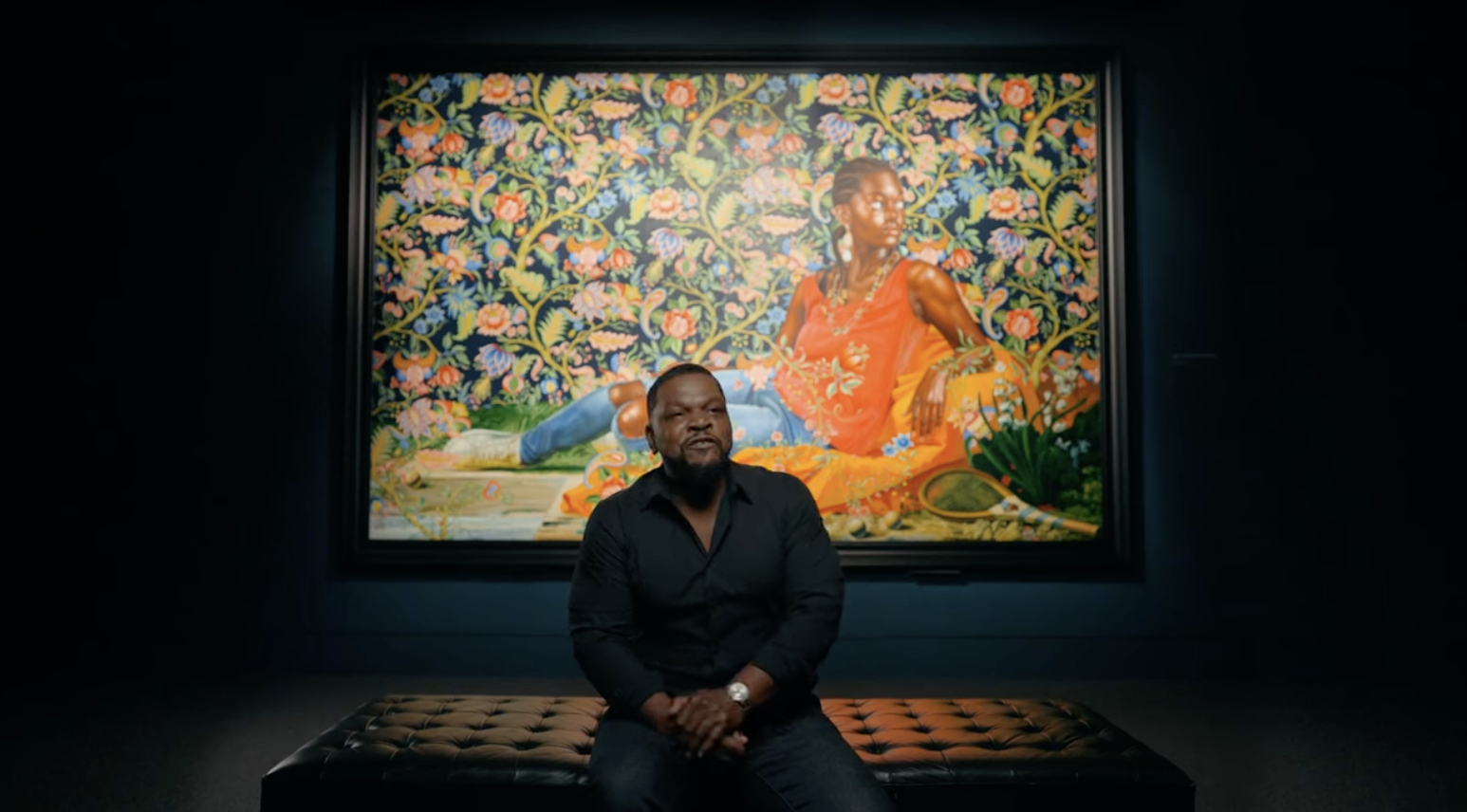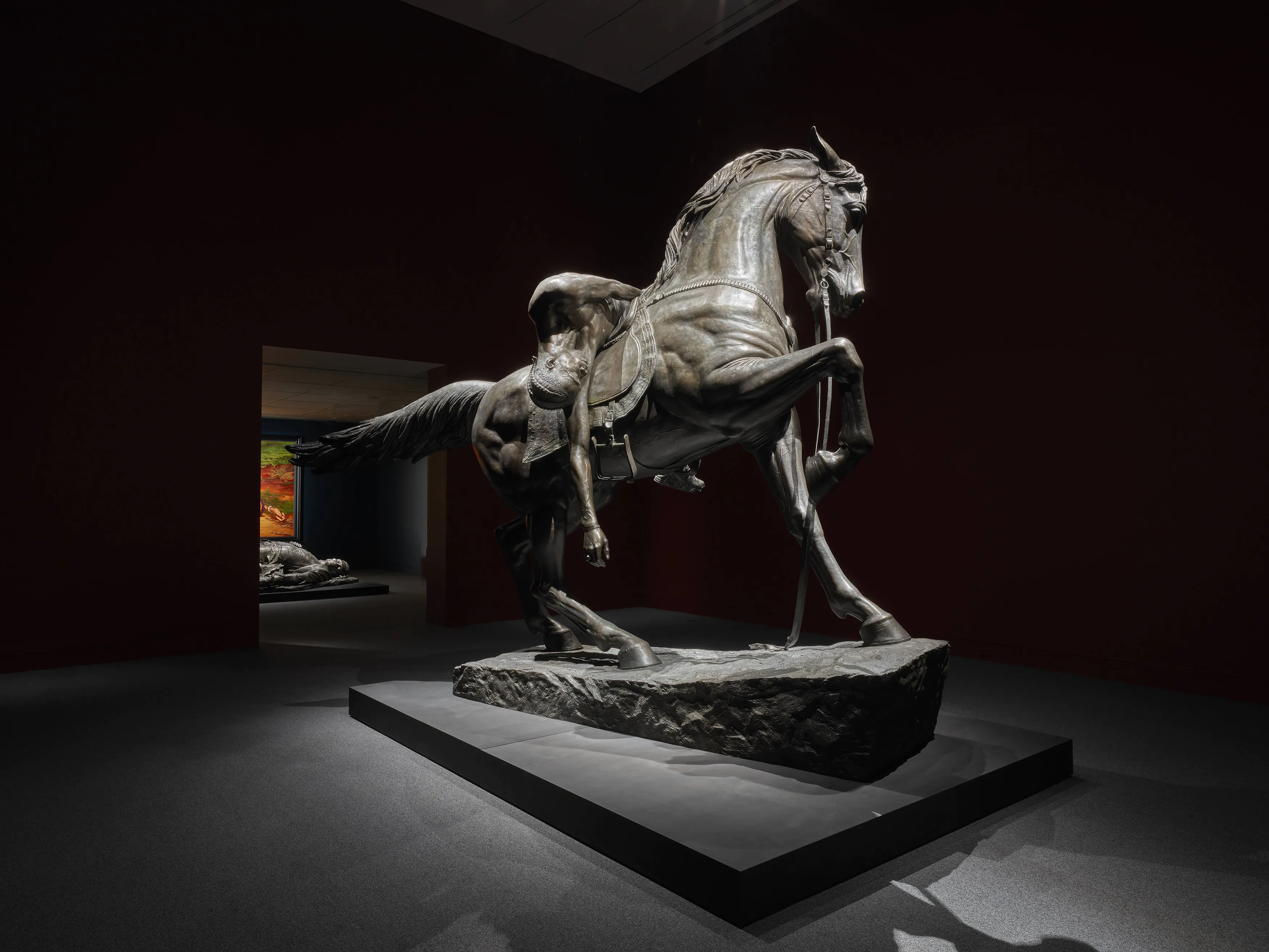
Kehinde Wiley
An Archaeology of Silence – Houston
Kehinde Wiley’s solo show An Archaeology of Silence is opening its doors on November 19, 2023 at The Museum of Fine Arts in Houston. The traveling exhibition of a monumental body of work, with large-scale paintings and sculptures, premiered earlier this year at the Fine Arts Museums of San Francisco.
“This work being in Houston is an opportunity to see my paintings and sculptures in a completely new dynamic, to see it in a different part of America, and also see an amazing curatorial staff presenting it in a way that’s new, fresh, and exciting.” —Kehinde Wiley
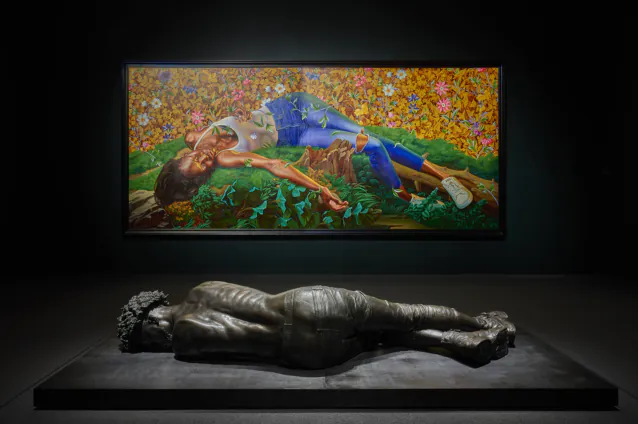
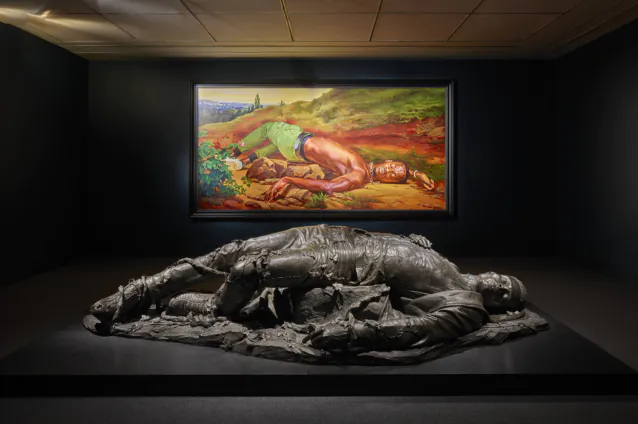
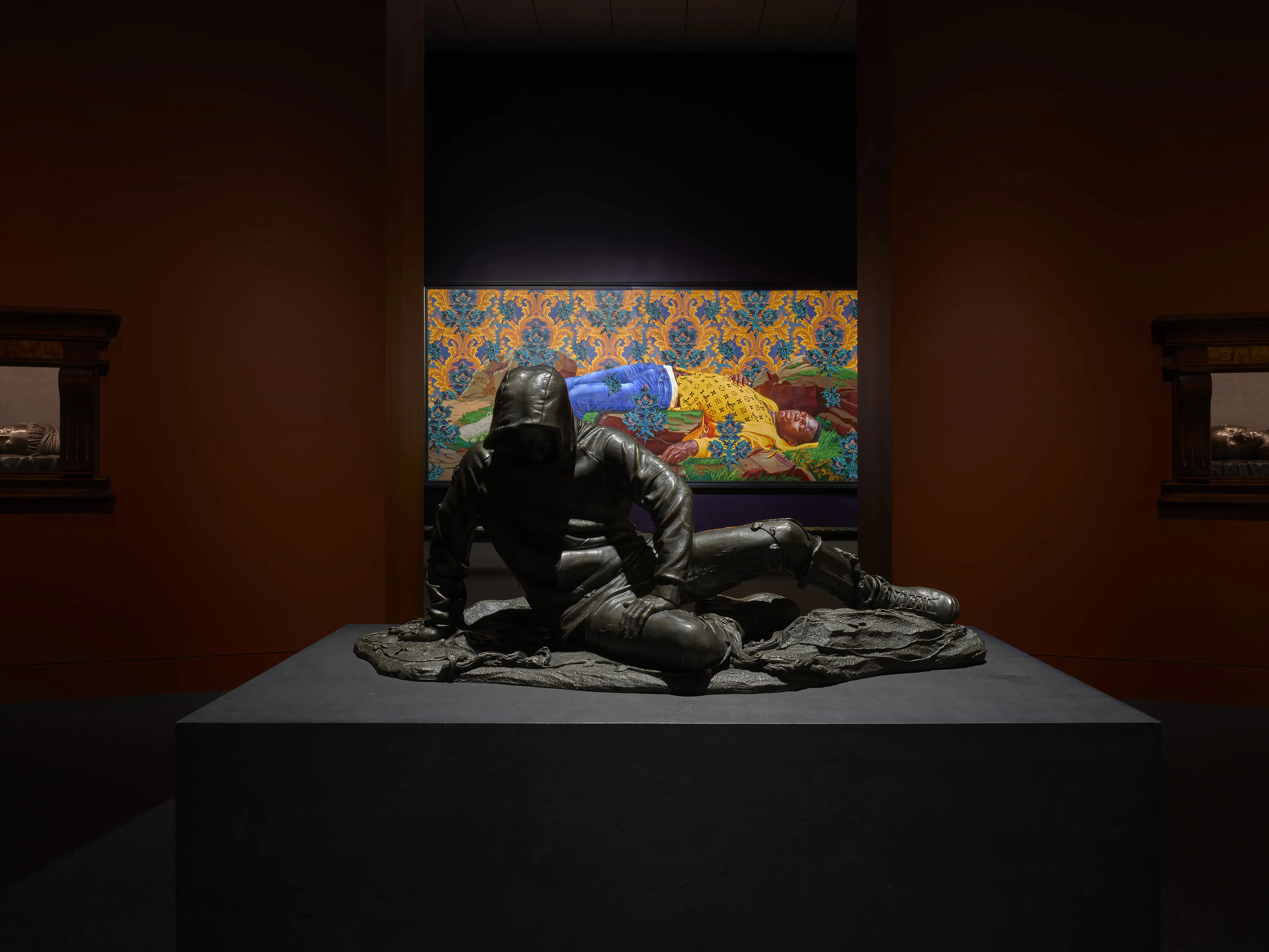
For this new body of work, Wiley sheds light on the brutalities of American and global colonial pasts using the language of the fallen hero.
The exhibition will include a collection of new monumental paintings and sculptures, expanding on his body of work DOWN from 2008. Initially inspired by Holbein’s painting The Dead Christ in the Tomb as well as historical paintings and sculptures of fallen warriors and figures in the state of repose, Wiley created an unsettling series of prone Black bodies, re-conceptualizing classical pictorial forms to create a contemporary version of monumental portraiture, resounding with violence, pain, and death, as well as ecstasy.
For this new body of work, Wiley has expanded these core thematic elements to meditate on the deaths of young Black men slain all over the world. Technology allows viewers to witness these graphic depictions of violence against the Black body that were once silenced. Wiley states, “That is the archaeology I am unearthing: The spectre of police violence and state control over the bodies of young Black and Brown people all over the world.” In light of the current global conflicts, language concerning power struggles and inalienable human rights are more critical than ever.
The new portraits depict young Black men and women in positions of vulnerability that tell a story of survival and resilience, revealing the beauty that can emerge from the horrific. These poses, borrowed from Western European art historical sources, function as beautiful elegies echoing a central metaphor of youth and resilience and stand as monuments to endurance and perseverance in the face of savagery, incorporating a scale that pushes beyond the mere corporeal and into the realm of spiritual icons, of martyrs and saints.
The exhibition is curated by Christophe Leribault, President of the Musée d’Orsay and Musée de l’Orangerie, who organized “Kehinde Wiley: Lamentation”, Wiley’s first exhibition in France at the Petit Palais in 2016. As an art historian specializing in 19th century, Leribault has a deep connection to the art historical underpinnings of Wiley’s work.
The artist

Born in 1977 in Los Angeles, Kehinde Wiley lives and works in New York. Examining issues of racial and sexual identity, his works create collisions where art history and street culture come face to face. The artist makes eroticised heroes of the invisible, those traditionally banished from representations of power. His work reinterprets the vocabulary of power and prestige, part politically-charged critique, part an avowed fascination with the luxury and bombast of Western symbols of male domination.
